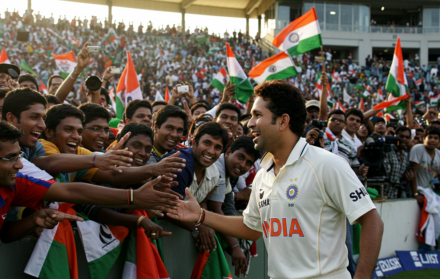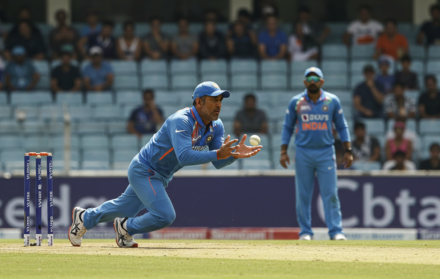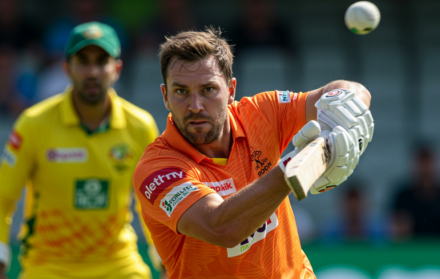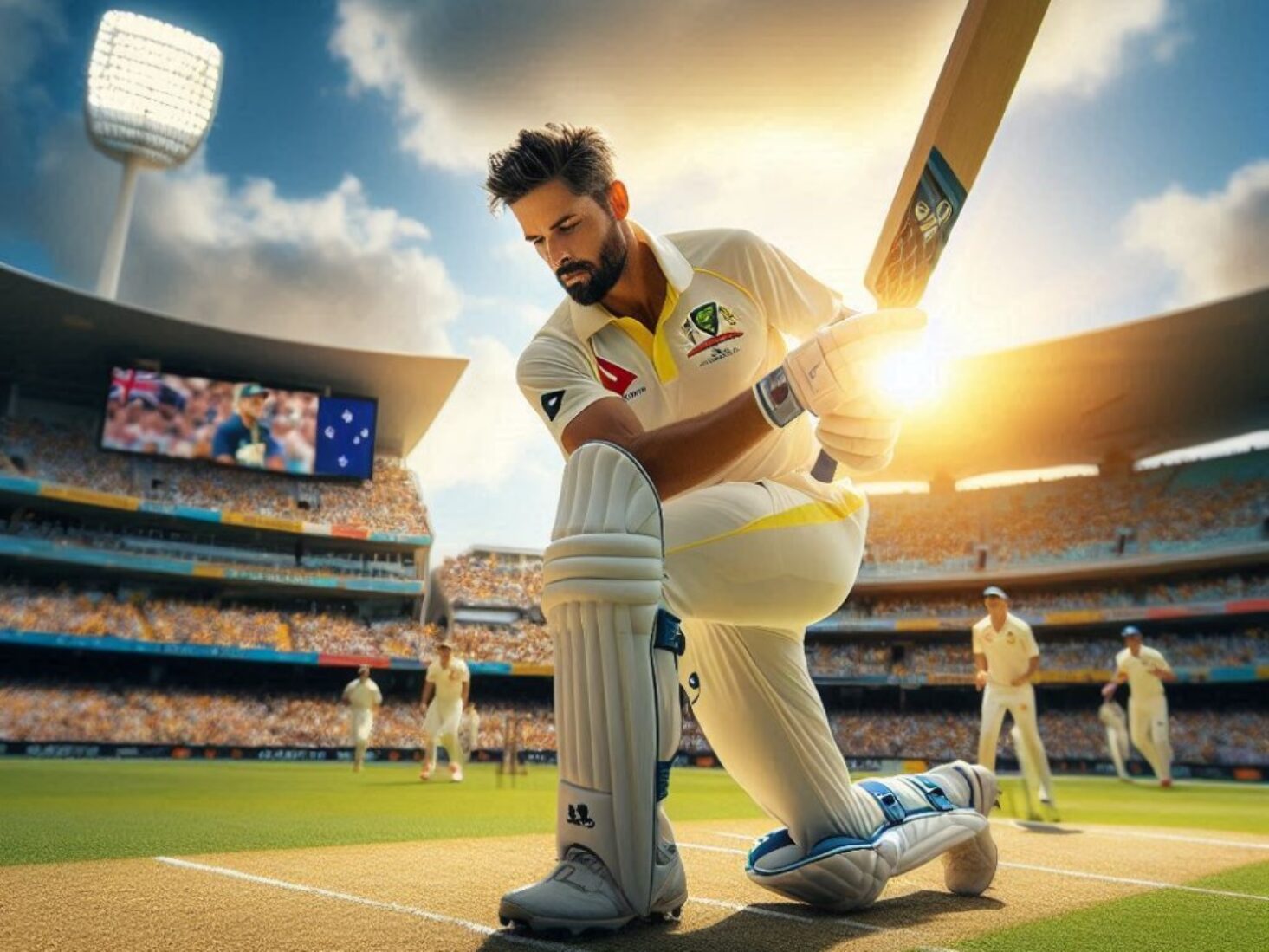
What Are The Fundamental Techniques Every Cricket Player Should Know
Cricket is a popular sport that requires a unique set of skills and techniques. Whether you’re a beginner or an experienced player, understanding the fundamental techniques is essential for success on the field. We will cover the main techniques every cricket player should know, focusing on the grip, stance, footwork, batting techniques, bowling techniques, and fielding techniques.
The grip is the foundation of a player’s control over the bat and ball. It consists of two key aspects: the bat grip and the ball grip. The bat grip involves holding the bat correctly to achieve optimal control and power during shots. Similarly, the ball grip is crucial for achieving different types of deliveries and generating spin or pace.
The stance plays a significant role in a player’s balance and readiness to face or deliver the ball. A proper batting stance ensures stability and allows for quick movement, while a bowling stance determines accuracy and control over the ball.
Footwork is essential for a batsman to adjust their position and reach the ball effectively. It includes various movements like the forward defense, backfoot defense, and front-foot drive, all of which contribute to shot selection and stroke play. The backfoot drive is another crucial footwork technique used to execute powerful shots off the back foot.
Batting techniques are vital for scoring runs and building partnerships. Some key batting techniques include the straight drive, cover drive, on-drive, pull shot, square cut, sweep shot, and reverse sweep. These techniques allow batsmen to hit the ball to different areas of the field while maximizing their chances of scoring runs.
Bowling techniques vary between fast bowlers and spin bowlers. Fast bowlers focus on generating pace and accuracy, while spin bowlers aim to deceive the batsman by imparting spin on the ball. Mastering the appropriate techniques for each style is crucial for effectiveness and success as a bowler.
Fielding techniques involve different aspects like catching, ground fielding, and throwing. Effective catching techniques ensure that fielders can take catches confidently and safely. Ground fielding techniques include techniques for fielding the ball cleanly and quickly, while throwing techniques ensure accurate and swift throws to hit the stumps or return the ball to the wicketkeeper.
By understanding and practicing these fundamental techniques, cricket players can enhance their skills and contribute to their team’s success on the field.
The Grip

Mastering the fundamentals is essential in any sport, and cricket is no exception. In this section, we dive into the crucial aspect of the grip. Discover the secrets to a solid bat grip and a firm ball grip that can heavily influence a player’s performance on the pitch.
Refining these techniques can make all the difference between a well-executed shot and a missed opportunity. So, grab your bat and get ready to enhance your cricket skills from the ground up.
1. Bat Grip
To have a successful grip on the bat in cricket, follow these steps:
- Hold the bat with your non-dominant hand at the top of the handle, placing your hand comfortably around it.
- Place the bottom hand around the handle, forming a “V” shape with your index finger and thumb.
- Ensure the “V” shape is pointing towards the shoulder opposite to the hand you hold the bat with.
- Maintain a firm grip, but avoid excessive tension in the hands.
- Position your hands close together for better control and maneuverability.
Mastering proper bat grip is crucial for achieving accurate shots and overall performance in cricket.
2. Ball Grip
- The ball grip, also known as the way you hold the ball, plays a crucial role in cricket. It greatly influences the accuracy and spin of the delivery.
- To achieve the correct ball grip, follow these steps:
- Begin by holding the ball in your dominant hand, making sure that the seam is positioned vertically.
- Next, place your index and middle fingers on either side of the seam, with the first two knuckles resting on top.
- Lastly, position your thumb on the opposite side of the ball to provide support and control.
Remember to regularly practice these steps in order to develop a consistent and effective ball grip. It’s also beneficial to experiment with different variations to create diverse bowling techniques.
The Stance
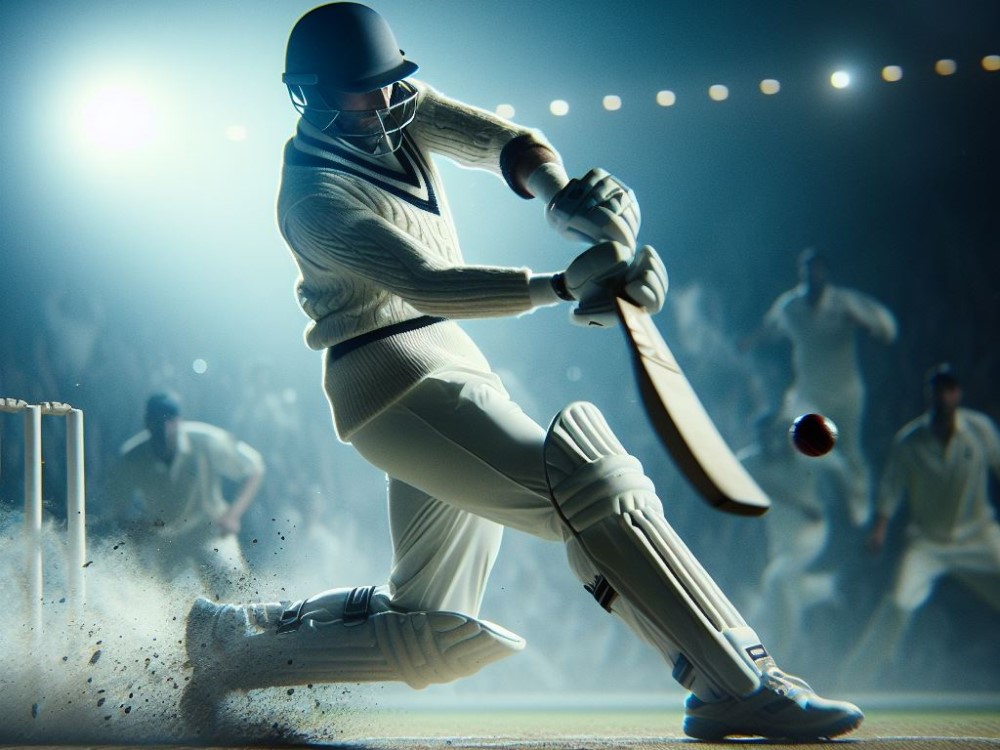
Taking a solid stance is the cornerstone of success for any cricket player. In this section, we dive into the world of the stance, exploring its crucial role in both batting and bowling. Discover the secrets to the perfect batting stance, unlocking the power and precision needed to deliver those winning shots.
We unravel the intricacies of the bowling stance, unleashing the skills necessary to dominate the crease and outwit the opposition. Prepare to enhance your game as we explore the art of the stance in cricket.
1. Batting Stance
The batting stance is a fundamental technique in cricket that sets the foundation for a player’s performance at the crease. Here are some key steps to consider:
- Start with a balanced position, standing with your feet shoulder-width apart.
- Keep your weight evenly distributed between both feet, allowing for quick movement in any direction.
- For a proper batting stance, grip the bat comfortably with both hands, allowing for flexibility and control.
- Align your front shoulder towards the bowler while keeping your head upright and eyes focused on the bowler’s hand.
- Flex your knees slightly and ensure your body is relaxed, ready to move dynamically in response to the bowler’s delivery.
Remember, the batting stance is a personal preference, so practice different variations to find one that suits your style. Consistency and practice are essential for mastering this crucial technique in cricket. Good luck!
2. Bowling Stance
Having a proper bowling stance is crucial in the game of cricket as it ensures accuracy, balance, and power.
Follow these steps to achieve a good bowling stance:
-
- Start by standing straight with your feet shoulder-width apart.
- Hold the ball with a comfortable grip.
- Extend your non-bowling arm towards the target.
- Position your front foot parallel to the crease.
- Direct your front foot towards the target.
- Take a small step forward with your back foot.
- Ensure that your weight is evenly distributed over both feet.
- Keep your head and eyes focused on the target.
The Footwork

Mastering the art of cricket requires a solid foundation in fundamental techniques. In the realm of footwork, players unlock the key to seamless movement and optimal shot execution. Let’s explore four essential sub-sections: forward defense, backfoot defense, front foot drive, and backfoot drive.
Each of these techniques holds the potential to shape a player’s prowess on the pitch, elevating their chances of success. So lace up your shoes and get ready to dive into the footwork fundamentals that can make or break an innings.
1. Forward Defense
The forward defense, also known as the front foot defense, is a critical technique in the game of cricket that allows batsmen to effectively defend against deliveries.
By stepping forward and using their bat to block the ball close to their body, batsmen can build a strong defensive foundation and protect their wicket. Mastering the forward defense is essential for resisting attacking deliveries and keeping the bowler at bay.
Throughout history, legendary cricketers such as Don Bradman and Sachin Tendulkar have utilized the forward defense with great success, highlighting its significant role in the game.
2. Backfoot Defense
To master the backfoot defense technique in cricket, follow these steps:
- Take a balanced stance with your feet shoulder-width apart.
- Shift your weight onto your back foot as the bowler approaches.
- Watch the ball closely as it leaves the bowler’s hand.
- Move your back foot back and across towards the off stump.
- Take a short stride forward and plant your foot firmly.
- Keep your head over the ball and align your body towards the target.
- Keep your eyes level and hands close to your body for quick reaction.
- Use your backfoot as a solid base to practice the backfoot defense.
- Maintain a firm grip on the bat and use soft hands to absorb the impact.
- Practice this technique regularly to improve your defensive skills.
3. Front Foot Drive
The front foot drive is a crucial batting technique in cricket. To excel in cricket, it is important to master the front foot drive.
To perform this shot effectively, follow these steps:
- Maintain a balanced and wide batting stance. This will help in setting a strong foundation for your front foot drive.
- Step forward with your front foot towards the line of the ball. This footwork is essential for executing a successful front foot drive.
- Keep your weight evenly distributed on both feet. This balance is necessary to maintain stability and control during the shot.
- Watch the ball closely and time your shot. Proper timing is crucial for making good contact with the ball during the front foot drive.
- Ensure a full extension of the arms at the point of contact. This extension will provide power and accuracy to your front foot drive.
- Drive the ball with a straight bat, aiming for the gap in the field. This will increase the chances of scoring runs with your front foot drive.
To improve your front foot drive, practice regularly and focus on timing and coordination. Repetition and dedication are key to mastering this technique.Remember to analyze the pitch conditions and adapt your technique accordingly.
Different pitches require adjustments in your front foot drive.Incorporating the front foot drive into your skillset will enhance your overall batting performance. It is a valuable weapon in a batsman’s arsenal.Keep practicing and mastering the fundamental techniques to excel in cricket. The front foot drive is just one aspect of a complete batting repertoire.
4. Backfoot Drive
The backfoot drive, a versatile shot in cricket, is an essential technique requiring proper positioning, balance, and timing. When executing this shot, consider the following key points:
- Footwork: Achieve a balanced stance with equal weight distribution on your back foot.
- Backswing: Perform a controlled backswing, ensuring your head remains over the ball.
- Transfer of weight: As the ball approaches, shift your weight onto the front foot and pivot your hips.
- Timing and follow through: Aim to make contact with the ball while leaning into the shot, ensuring a full and extended follow-through.
It is worth noting that the backfoot drive can effectively score runs off both fast and spin bowling.
The Batting Techniques

Mastering the art of cricket batting requires a firm grasp of the fundamental techniques. In this section, we’ll explore the various shots that every player should know – from the elegant straight drive to the powerful pull shot, and everything in between. Get ready to dive into the world of batting as we uncover the secrets behind the techniques that make cricket players stand out on the field.
1. Straight Drive
The straight drive is a classic cricket shot used to strike the ball straight down the ground. To execute a successful straight drive, players should:
- Position themselves well by aligning their head, shoulders, and feet towards the intended target.
- Keep their head still and their eyes focused on the ball.
- Take a step forward with their front foot as the ball approaches.
- Ensure the bat swings with a straight vertical trajectory, making contact with the ball at the perfect timing and point of contact.
- Follow through with the shot, maintaining balance and control.
Mastering the straight drive requires technique, timing, and practice to achieve consistent success.
In cricket history, Sir Donald Bradman, widely regarded as the greatest batsman of all time, was known for his exceptional straight drive. He utilized this shot to score many runs and left a remarkable legacy in the cricket world.
2. Cover Drive
A cover drive, also known as the classic and elegant shot in cricket, is a technique that requires precision and skill. To effectively execute a cover drive, a batsman must master the right body positioning and timing. Here is a step-by-step guide to perfecting the cover drive:
- Begin by positioning yourself with a slightly open stance, ensuring that your front shoulder is aligned towards the bowler.
- As the ball is delivered, shift your weight onto your front foot while maintaining a still head and focused eyes on the ball.
- With a full swing of the bat, drive the ball, making contact when it reaches your front foot.
- Complete your shot with a follow-through, extending your arms and wrists in the direction where you want the ball to go.
Fun fact: The cover drive not only showcases aesthetics but also possesses the ability to score boundaries and runs gracefully.
3. On-Drive
In cricket, mastering the on-drive technique is crucial for batsmen. The on-drive is a shot played by hitting the ball straight down the ground on the leg side. It requires excellent timing, balance, and footwork.
Batsmen need to position themselves correctly, transfer their weight onto the front foot, and execute the on-drive with a straight bat. Practice drills, such as hitting balls tossed by a coach or using a bowling machine, can greatly aid in improving the on-drive technique.
Remember, consistent practice and proper technique are key to mastering the on-drive and becoming a successful batsman. Happy practicing!
4. Pull Shot
- To execute the pull shot effectively in cricket, follow these steps:
- Position yourself with a strong base, feet shoulder-width apart.
- Grip the bat firmly, with your top hand controlling the handle and your bottom hand supporting it.
- As the bowler releases the ball, swiftly pivot your front foot and transfer your weight onto your back foot.
- Keep your eye on the ball and bring the bat forcefully down and across your body, making contact just in front of your front shoulder.
- Follow through with the pull shot by rotating your hips and shoulders.
Pro-tip: Practice timing and positioning to maximize the power and accuracy of your pull shot.
5. Square Cut
The square cut, a classic cricket shot, is played against short-pitched deliveries outside the off-stump. It is a powerful stroke that demands good technique and timing. Here are the key points to keep in mind when executing the square cut:
- Position yourself slightly on the back foot and assume a good side-on position.
- Closely observe the ball as it leaves the bowler’s hand and accurately judge its length.
- Transfer your weight onto your back foot and pivot on your front foot while rotating your hips and shoulders.
- Utilize a short, sharp, and controlled backlift to generate power.
- Deliver the bat down in a horizontal arc, aiming to hit the ball through the point or cover region.
- Maintain level eyes and a still head when making contact with the ball.
- Complete the shot with a follow-through, extending your arms and wrists to maintain balance and control.
The square cut proves to be an effective stroke for scoring runs through the off-side; however, mastering the required technique necessitates practice and patience.
6. Sweep Shot
- The sweep shot is an essential batting technique in cricket that allows batsmen to score runs against spin bowlers. To execute the sweep shot effectively, it is important to follow these key steps and considerations:
- Footwork: Position your feet in a balanced stance, with the front foot forward and the back foot back.
- Bat grip: Hold the bat with a firm grip, keeping the bottom hand predominantly on the handle.
- Shot execution: As the bowler releases the ball, bend your knees and perform the sweep shot in a horizontal arc across the line of the ball.
- Timing: Mastering the timing of the sweep shot is crucial to ensure a successful connection with the ball.
- Placement: Aim to hit the ball towards vacant areas on the field and away from fielders.
- Practice: Regular practice and repetition are vital to perfecting the sweep shot and building confidence in executing it during matches.
By incorporating these steps into your batting technique, you can enhance your ability to score runs and manipulate the field against spin bowlers.
7. Reverse Sweep
The reverse sweep is an advanced cricket shot that requires precise technique and timing. Here are the steps to execute a successful reverse sweep:
- Open up your stance and position your body towards the off side.
- As the ball is being bowled, shift your weight onto your back foot.
- Use your wrists to quickly rotate the bat and bring it across your body.
- With a horizontal bat, make contact with the ball on the off side, aiming to hit it behind square.
- Follow through with your shot, keeping your eye on the ball until it is safely away.
Remember to practice this shot extensively before attempting it in a match. With enough practice and confidence, the reverse sweep, also known as the 7th cricket shot, can become a valuable addition to your batting repertoire. Have fun mastering this exciting cricket technique!
The Bowling Techniques

Discover the fascinating world of bowling techniques in cricket! We’ll dive into the secrets of fast bowling and unravel the artistry of spin bowling. From the sheer speed of fast bowling to the cunning spin of spin bowling, each sub-section holds valuable insights that can enhance a player’s performance on the pitch.
So, buckle up and get ready to explore the skills and strategies used by cricket’s bowling maestros!
1. Fast Bowling Techniques
Fast Bowling Techniques: Mastering the Essential Skills
Fast bowling in cricket requires a combination of technique, skill, and athleticism. To become an effective contributor to their cricket teams, aspiring fast bowlers should focus on mastering these essential fast bowling techniques:
- Grip: One crucial technique is to grip the ball with the seam upright and fingers slightly across it. This proper grip helps generate swing or seam movement and adds an element of unpredictability for the batsmen.
- Run-up: Maintaining a smooth and balanced run-up is another key aspect. The run-up should be used to build up momentum, which will contribute to a powerful delivery.
- Delivery stride: Aim for a long and smooth delivery stride. This stride allows for maximum speed and accuracy, enabling the bowler to hit the desired target consistently.
- Side-on action: Adopting a side-on position at the point of delivery is vital for fast bowlers. This position ensures maximum transfer of energy from the body to the ball, resulting in increased pace and potency.
- Follow-through: After delivering the ball, it is important to maintain a strong and balanced follow-through. This involves extending the bowling arm fully, which helps with accuracy and produces the desired outcome.
- Variations: Developing variations like the bouncer, yorker, and slower ball is crucial. These different delivery techniques keep the batsmen guessing and can result in wickets or restrict scoring.
- Mental and physical fitness: Lastly, working on mental resilience and physical fitness is essential. Fast bowling demands significant strength and endurance, both physically and mentally, to withstand the rigors of the game.
By focusing on these fast bowling techniques, aspiring bowlers can enhance their skills, adding value to their cricket teams and becoming formidable forces on the field.
2. Spin Bowling Techniques
- Spin bowling techniques are crucial for any cricket player striving to excel in their game. Here are the steps to master this essential skill:
- Arm position: Hold the ball with your fingers to generate spin.
- Grip: Use the variation that suits you – orthodox, leg spin, or off spin.
- Run-up: Approach the crease smoothly to maintain control.
- Release: Utilize your wrist and fingers to spin the ball at the desired speed.
- Flight: Experiment with the trajectory and height to deceive the batsman.
- Turn: Aim to make the ball curve or spin sharply off the pitch.
Fun Fact: The legendary Australian cricketer Shane Warne is widely regarded as one of the greatest spin bowlers of all time, with more than 700 international wickets to his name.
The Fielding Techniques

Mastering the art of fielding is essential for any cricket player looking to excel on the pitch. In this section, we’ll dive into the world of fielding techniques that make a significant impact on the game.
From honing our catching skills to mastering ground fielding and perfecting our throwing techniques, we’ll explore the key elements that can turn an ordinary player into an extraordinary fielder. Get ready to sharpen your skills and become a standout presence on the cricket field.
1. Catching Techniques
To become proficient in catching techniques in cricket, it is important to follow these steps:
- Positioning: Adopt a balanced stance, with hands at the ready and eyes fixed on the ball.
- Timing: Predict the trajectory of the ball and adjust your movements accordingly to reach the optimal position.
- Hand-eye coordination: Maintain a close visual on the ball, keeping your eyes fixed upon it until it safely lands in your hands.
- Grip: Employ soft and relaxed hands to absorb the impact of the ball and ensure a secure catch.
- Body alignment: Position your body behind the ball and align yourself properly to firmly grasp it.
- Secure the catch: Once you make contact with the ball, firmly grip it and bring it towards your body to eliminate any possibility of dropping it.
- Follow through: Sustain your focus even after completing the catch, guaranteeing full control and avoiding any accidental release.
Through consistent practice and refinement of these techniques, you can enhance your fielding skills and make significant contributions to your team’s triumph.
2. Ground Fielding Techniques
- Ground fielding techniques are crucial for any cricket player looking to excel on the field. Here are a few key steps to improve your ground fielding skills:
- Stay low and maintain a wide, balanced stance to react quickly and cover more ground.
- Keep your eyes on the ball at all times, anticipating its trajectory and speed.
- Move laterally to cut off the ball’s path and use quick footwork to get into position.
- Use a combination of sliding and diving techniques to stop the ball and prevent runs.
- Master the art of clean pick-ups, using both hands to gather the ball efficiently.
- Develop accurate and powerful throws to get the ball back to the wicketkeeper or other fielders quickly.
In the 2006 Champions Trophy, South African cricketer Herschelle Gibbs showcased exceptional ground fielding techniques by taking a spectacular one-handed catch while diving backward. This skillful display of fielding not only stunned the opposition but also ignited a passion for improving ground fielding across cricket globally.
3. Throwing Techniques
Throwing techniques are crucial in cricket as they can determine the accuracy and speed of the throw. Here are some essential throwing techniques:
- Overarm Throw: This is one of the main throwing techniques used by fielders to accurately throw the ball over a significant distance.
- Sidearm Throw: Another important throwing technique in cricket is the sidearm throw. It is particularly useful for quick and low throws, especially when fielding close to the ground.
- Underarm Throw: Fielders often employ the underarm throw technique when they are fielding close to the stumps. This technique allows for accurate and gentle throws.
Pro tip: Practice each throwing technique regularly to improve accuracy and speed. Focus on proper body mechanics, such as a smooth arm motion and utilizing your core for power, to enhance your throwing skills.

